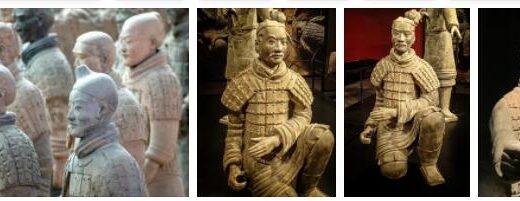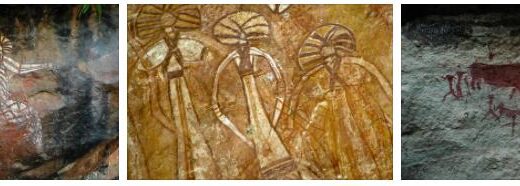Shaanxi, China
Shaanxi [ ʃ a ː nçi ː ], Shenxi [ ʃ ənçi ː ], Shensi, Schensi, province in northwest China, in the east largely bounded by the Hwangho, 195,800 km 2, (2010) 37.3 million residents; The capital is Xi’an.In the north, Shaanxi comprises a loess plateau located 1,000–2,000 m above sea level, overlooked by the Baiyu Shan mountain range (with deeply cut valleys). To the south joins the Wei-He plain, which has an east-west extension of 300 km and a width of 30 to 80 km. It is the main settlement and economic area of the province, which includes the oldest arable farming areas in China and where the earliest Chinese state formations took place. According to businesscarriers, the plain is bounded in the south by the Qinling Shan (up to 3 767 m above sea level), which slopes steeply to the south to the valley of the Han Shui and thus separates the temperate, steppe-like climate in the north from the dry, subtropical climate in the south. The southern border of the province runs over the Micang Shan and Daba Shan mountains (up to 2,708 m above sea level), which frame the Sichuan Basin to the northeast. Most of the big cities are located in the east-west running, densely populated Wei-He Plain, where wheat and cotton are grown, in the south rice, corn, rapeseed and pulses, as well as orange, mandarin, tea and tung oil tree cultures. About a third of the area under cultivation is irrigated. Mining takes place on hard coal (in Tongchuan and Hanzhong), oil and natural gas, and to a lesser extent on iron ore, gold and salt. The most important branches of industry are the aviation industry, cotton processing and mechanical engineering, as well as coal and oil processing, iron metallurgy, chemical, building materials and electronic industry, armaments and heavy industry, and pharmaceutical production. Hydroelectric power plants on Han Shui (Ankang, 800 MW; Shiquan, 135 MW) are used to generate energy. The leading industrial locations are Xi’an and Baoji. Shaanxi is crossed by the Longhai Railway from east to west; River cruise on the Han Shui (navigable from Hanzhong). Significant historical monuments (including the Qin Shihuang mausoleum with the world-famous terracotta warriors) are important, especially for tourism.
Xi’an
Xi’an [ ɕ i-], Hsian, Sian, 1932–43 Siking, capital of Shaanxi Province, China, in the center of the Wei-He plain, 8.5 million residents in the entire administrative area, thereof 5.8 million Residents in the boroughs;economic and cultural center with two universities, technical colleges, etc. for mechanical engineering, geology, medicine and communication, music and art schools, museums, botanical gardens. More than half of all industrial companies in the province are located in Xi’an, v. a. Mechanical engineering, textile and chemical industry, manufacture of electronic and electrical devices, porcelain goods and printed matter, iron and steel works; Transport hub on the railway line from Lianyungang to Ürümqi, airport.
The foundations of palaces and city walls of the chessboard-like metropolis of the Tang period, which were divided into palace city, imperial administrative city and outer city, were uncovered. In the center of Xi’an the bell tower (Zhonglou, 1384, renovated in 1582), to the north the drum tower (Gulou, 14th century, renovated in the 17th / 18th century). Further south-east in the former Confucius Temple is the Shaanxi Province Museum (archaeological finds; »Stelae Forest«, stele). Near the center there is a former temple of the Tang period with the “Small Wild Goose Pagoda” (Xiaoyan Ta, between 707 and 710); to the south-east is the temple complex of “Good Will” (Da Ci En, 652) with the “Great Wild Goose Pagoda” (Dayan Ta); it is a typical Chinese step pagoda made of bricks. Outside was the emperor’s initial palace Qin Shi Huangdi (China, history); 40 km northeast near Lintong is the emperor’s mausoleum with an underground army of life-size terracotta figures. In 1990, another army of clay soldiers was uncovered northeast of Xi’an. These are terracottas from the 2nd century BC, reduced to a third of life size. Chr.
Xi’an, in ancient times Chang’an, Tschangan, is one of the oldest cities in China (in the vicinity of numerous remains of the Neolithic Yangshao culture, from around 5000 BC). Chang’an was the capital of China during the Han, Sui and Tang times, as well as during some small dynasties that ruled over parts of China. At times the city also had other names, since the Ming period (1368–1644) it has been called Xi’an. Until the modern era, it only occupied part of the much larger Tang metropolis, which was surrounded by a 25 km long wall. Other capitals of China were in the immediate vicinity of the city, including Xianyang as well as Haojing and Fengyi. Since the 3rd century BC The city was the starting point of the old Silk Road. Chang’an experienced the greatest flowering in the 7th / 8th centuries. Century, when almost 2 million residents lived in the capital’s administrative area. – On December 12th Chiang Kai-shek arrested by the Chinese Marshal Zhang Xueliang and forced into an alliance with the CPC in the anti-Japanese resistance struggle (“Xi’an incident”).



